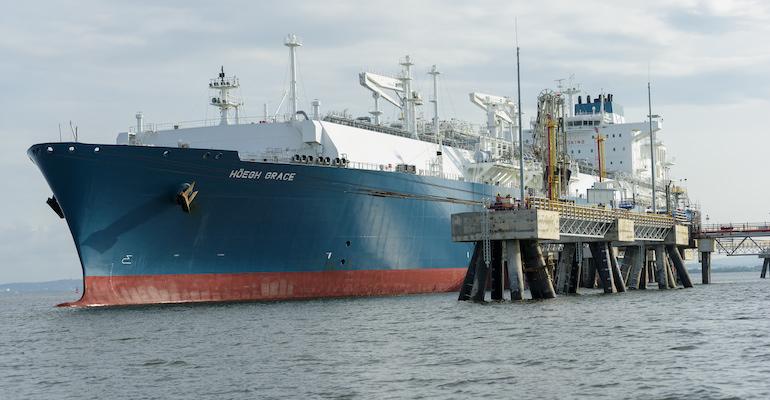Quick to answer his rhetorical question, Morgan offered a view that it was unlikely that origins and destinations for seaborne gas would return to their pre-war levels where Russia was a major supplier of gas into Germany, even if the war were to end. In his detailed slide presentation, the analyst suggested that global shortages of gas would persist globally, throughout 2023 as trades re-adjust.
For invested in listed stocks, challenges of this type bring opportunities- in the form of seasonal arbitrage opportunities where price differentials set the stage for opportunistic sales of gas into different geographies. In late 2022, upside differentials paid by European importers have backed off the records set following the 24 February 2022 invasion, and during the subsequent surge during 2022’s summer months.
At end 2022, the TTF Netherlands, a notional price for gas imports used in northern Europe, had fallen below the Japan Korea Marker, a spot pricing benchmark for LNG imports into East Asia, as the premium price for gas into Europe (versus Asia) eased. Mother Nature has lent a helping hand here, with the blessing of a mainly mild European winter so far, against the backdrop of still German imports reduced compared to previous years, inventory drawdowns have been below historical levels.
Not surprisingly, once all the 2022 data comes in, imports into the European Union and UK are on track to exceed previous for yearly records. Though the Evercore ISI analysis indicates that short run capabilities for storing imported LNG are “inelastic”, analyst Morgan acknowledged that German import capacity would be expanding more quickly than he had previously anticipated due to diligent work by the German government.
End 2022 news reports from Wilhelmshaven in northern Germany showed Hoegh Esperanza, an FSRU with capacity of 165,000 cu m, was now online. Further reports indicated that the FSRU had received its first cargo in the first week of January, 2023. Maria Energy, owned by Tsakos Energy Navigation (NYSE: TNP), had loaded at Venture Global Calcasieu Pass, LLC, three weeks previously. Shipping sources noted that prior to this shipment, all German LNG had arrived by pipeline, with Russia accounting for a share in excess of 40%.
In the Evercore ISI presentation, Morgan pointed to the United States position as “The Once and Future LNG Export King”, with US export levels from the newly commissioned Calcasieu Pass facility compensating, partially, for reductions out of Freeport, Texas in second half of 2022 following a fire at Freeport LNG’s facility. He anticipated that the US would resume its position as the dominant exporter, a title ceded to Australia in second half of 2022, once Freeport LNG comes back online.
Among other US companies, Sempra has announced tentative plans to send gas from the States into Germany, while Excelerate, an FSRU specialist, will be deploying its FSRU, Excelsior (138,000 cu m) at Wilhelmshaven under a five-year contract. As suggested by Evercore ISI’s Sean Morgan, there’s no going back to the situation of 23 February 2022.
Copyright © 2024. All rights reserved. Seatrade, a trading name of Informa Markets (UK) Limited.
Add Seatrade Maritime News to your Google News feed.  |

